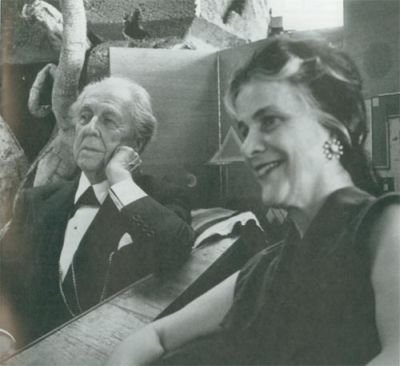“ A great architect is not made by way of a brain nearly so much as he is made by way of a cultivated, enriched heart”.

Frank Lloyd Wright was born on June 8, 1867 in Richland Centre, Wiscosin. Wright contributed the ‘Prairie’ and ‘Usonian’ styles to American residential architecture. Elements of his designs can be found in a large proportion of homes built today.
Wright studied civil engineering briefly at the University of Wisconsin. At 20 years of age, he joined a Chicago architectural firm as a draftsman. Wright eventually became chief draftsman and supervised the firm’s residential designs. Wright started his own firm in 1893, and began developing ideas for his ‘Prairie House’ Concept.

In 1932, Wright published his autobiography and along with his wife, Olgivanna Lasovich, co-founded ‘The Taliesin Fellowship’. The autobiography worked like an advertisement, inspiring many who read it to seek Wright out. Thirty apprentices came to live and learn under his tutelage. In 1936, Wright’s most famous work, ‘Falling Water’ was designed and ‘Taliesin West’ was built in Arizona as a winter location for the school.
The years after World War II to the end of Wright’s life were his most productive years. He received 270 residential commissions. Among his commercial designs were the Guggenheim Museum, the Marin Country Civic Centre, and the Price tower. Wright died in Arizona at the age of ninety-two. He had never retired from his profession.
FallingWater and Solomon Guggenheim Museum are his world renowned Projects…
FallingWater was constructed using the principles of Organic Architecture and he emphasized on the principles of Modernism in the design of Solomon Guggenheim Museum.
Theme and Philosophy | Frank Lloyd Wright
The first project he executed was ‘Winslow House’ in Illinois in 1984. This was the first example of a Prairie House.

Prairie Style
His work with space and construction possibilities in these houses had an effect on the design of his subsequent buildings. The typical characteristics of these free-standing houses were a broad, overhanging roof and horizontal window bands. A free plan was developed around a central chimney. The building had low proportions (not very high), which was related to the ground. It had a gently sloping roof. All these formed the characteristic features of domestic architecture.
The introduction of all these exterior features helped to form a new language in architecture.
- The first step was the development of the plan of the house which had a plenty of open spaces separated from one another by simple architectural devices instead of partitions, walls or doors. This was called the open plan.
- The integration of building with nature was another innovation.
- This helped Frank Lloyd Wright to develop the concept of organic architecture.
Organic Architecture
This school of thought holds that architecture should reflect nature and exhibit the same amount of unity as prevails in nature. F. L. Wright and Louis Sullivan were the pioneers of organic architecture.
Wright defined organic architecture as that in which all the parts are related to the whole and the whole is related to the parts.
To explain the concept of unity in nature, the architect used a living organism as an example:
- Harmony of the part in relation to the whole.
- The parts are made according to the function of the organism.
- The form of the organism decides the character of the organism.
- Applying these concepts , his building designs emphasize the following principles:
- Integration of parts to the whole.
- Design of parts controls the design of the whole.
Use of materials in organic architecture
Wright had a deep knowledge of and a lot of respect for natural materials such as wood and stone. These materials had hitherto been used in different ways – covered, painted, plastered, and altered to suit any particular fashion or taste. But in his works, these materials were always used in the natural form, by allowing for instance, the use of masses of stone as the natural feature of the building.
Some of the key projects by Frank Llyod Wright have earned a lot of recognition. Each of his projects are completely unique and have been praised all over the world.
Hi David, you might want to consider putting up your art work on Ebay or Craiglist. Or try a Yard sale, maybe…
a remarkable article, insightful and organically designed. FLW would be proud of your work. any suggestions on who might be interested in acquiring my bronze portrait sculpture of Mr. Wright?
what do you know about the FLW conservancy?
absolutely wow!!!!!! article ,gr8
You have a mis date, it says winslow house was built in 1984, should be 1894. bit of a difference. but still good article
how nice to look and search for Frank Lloyd Wright philosophy..i admired contribution in architecture.
I just purchased a 1955 ranch that someone put alot of love and money into in 1955. One owner. The roof is going up or off and an homage to FLW is about to begin. Interested? Let me know. On 3.2 acres and 40,000 cars pass daily. If we go up, 100,00’s of thousands will se it daily.